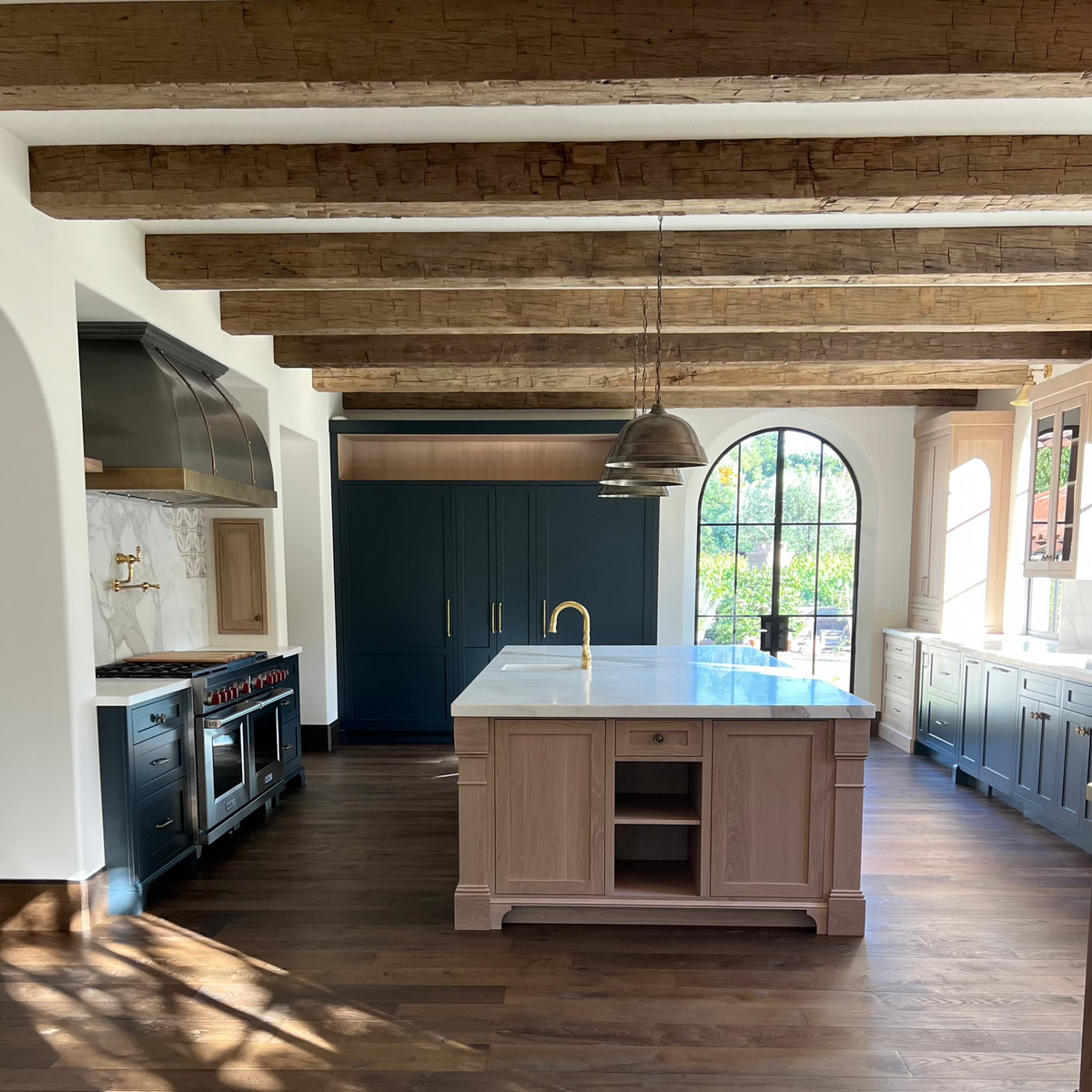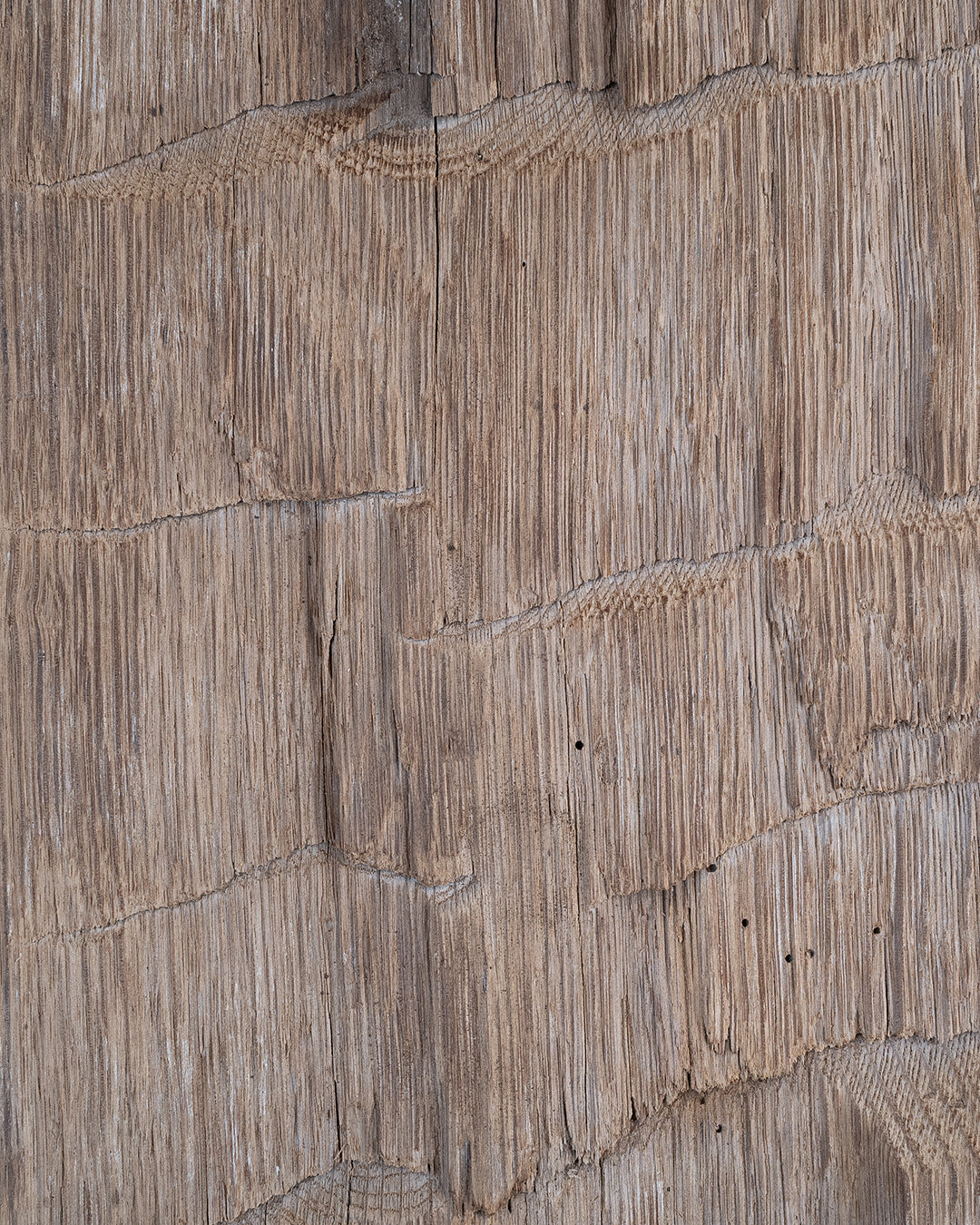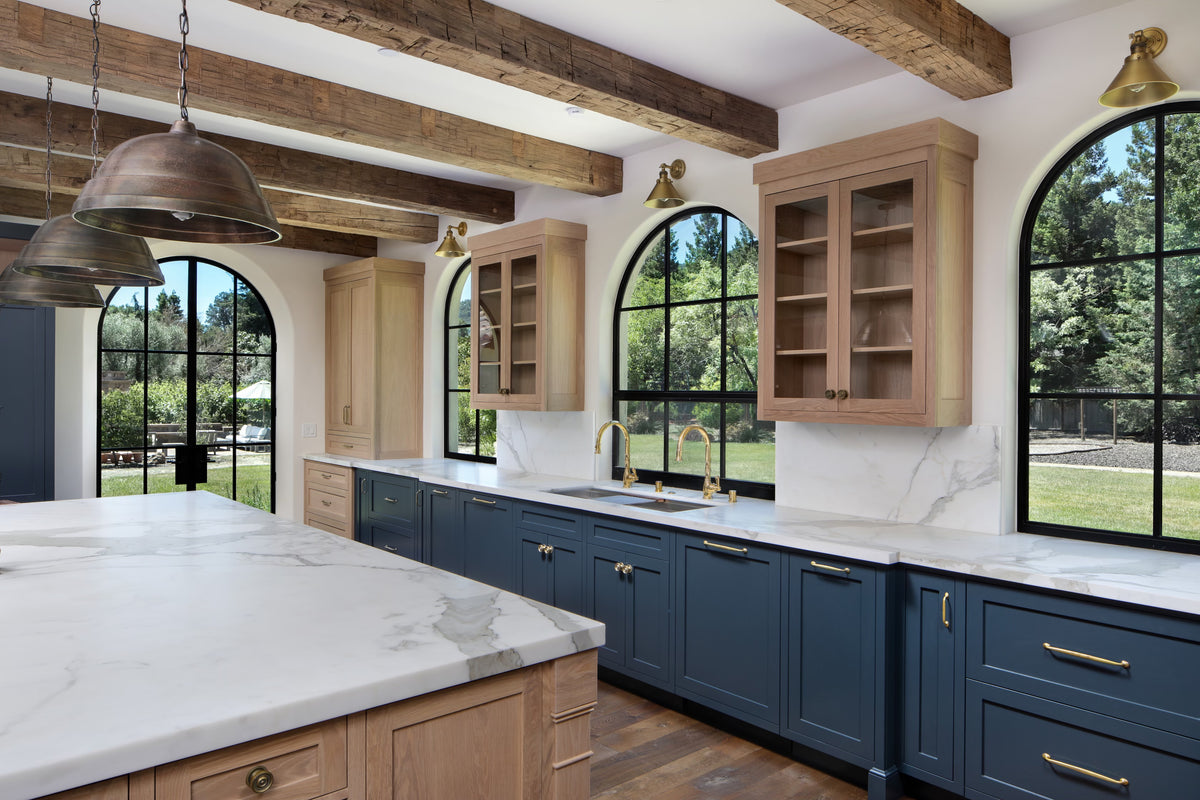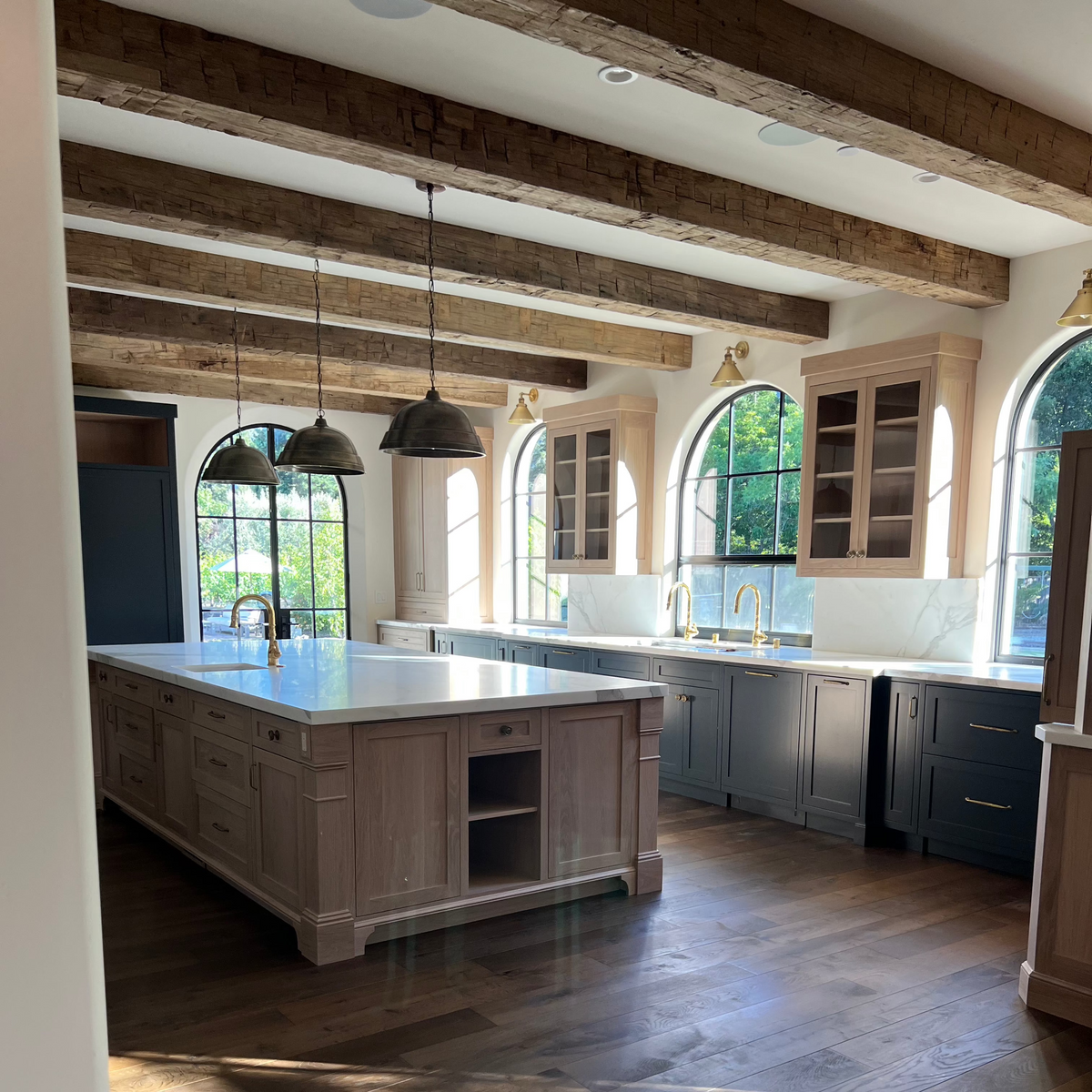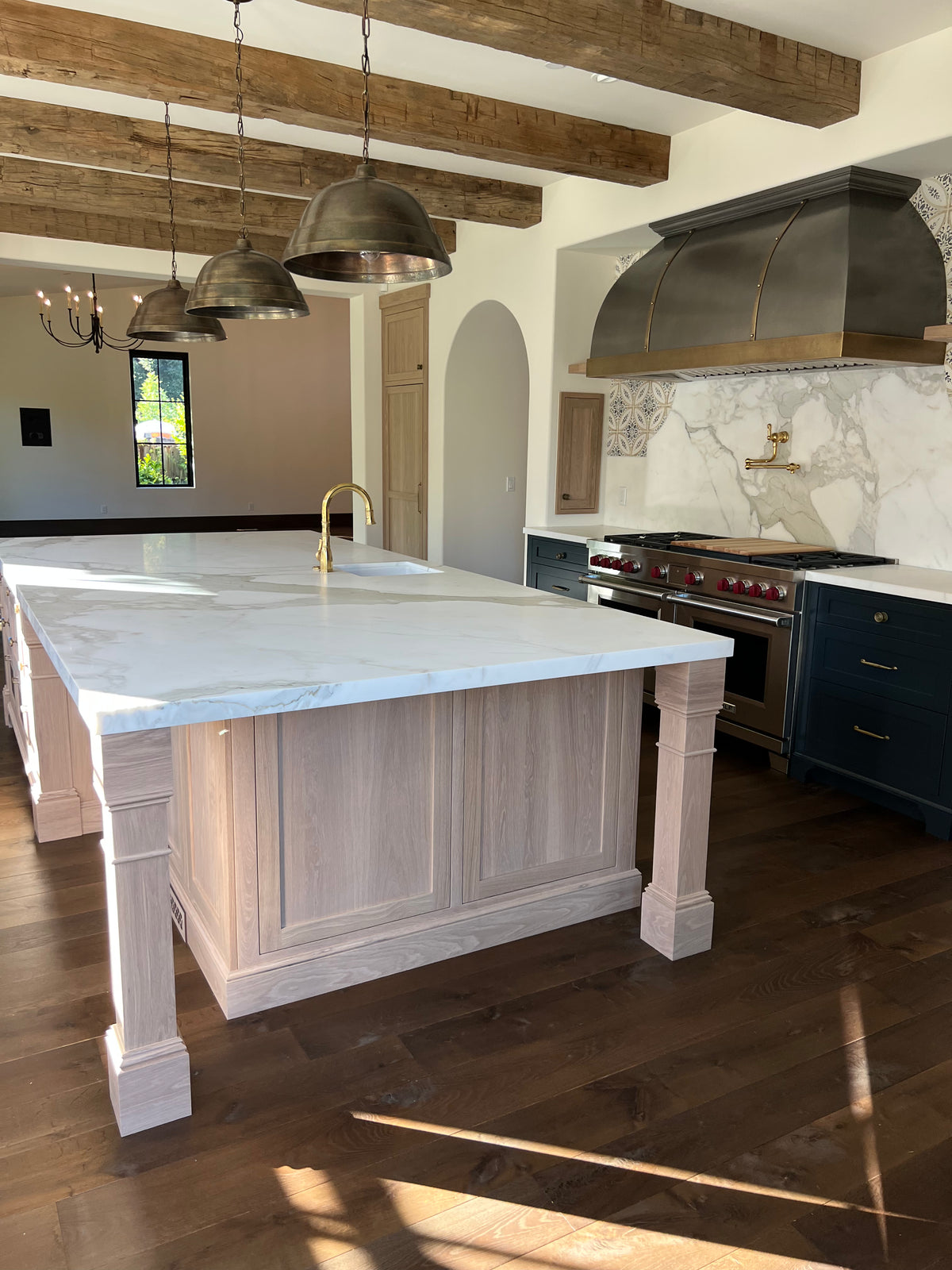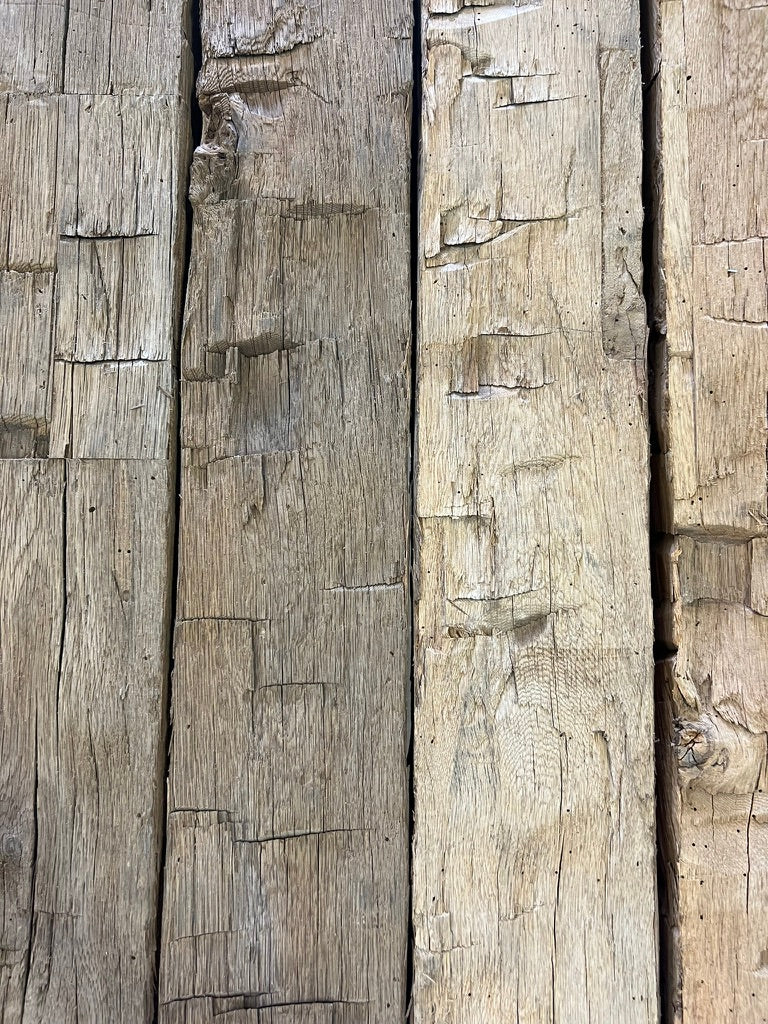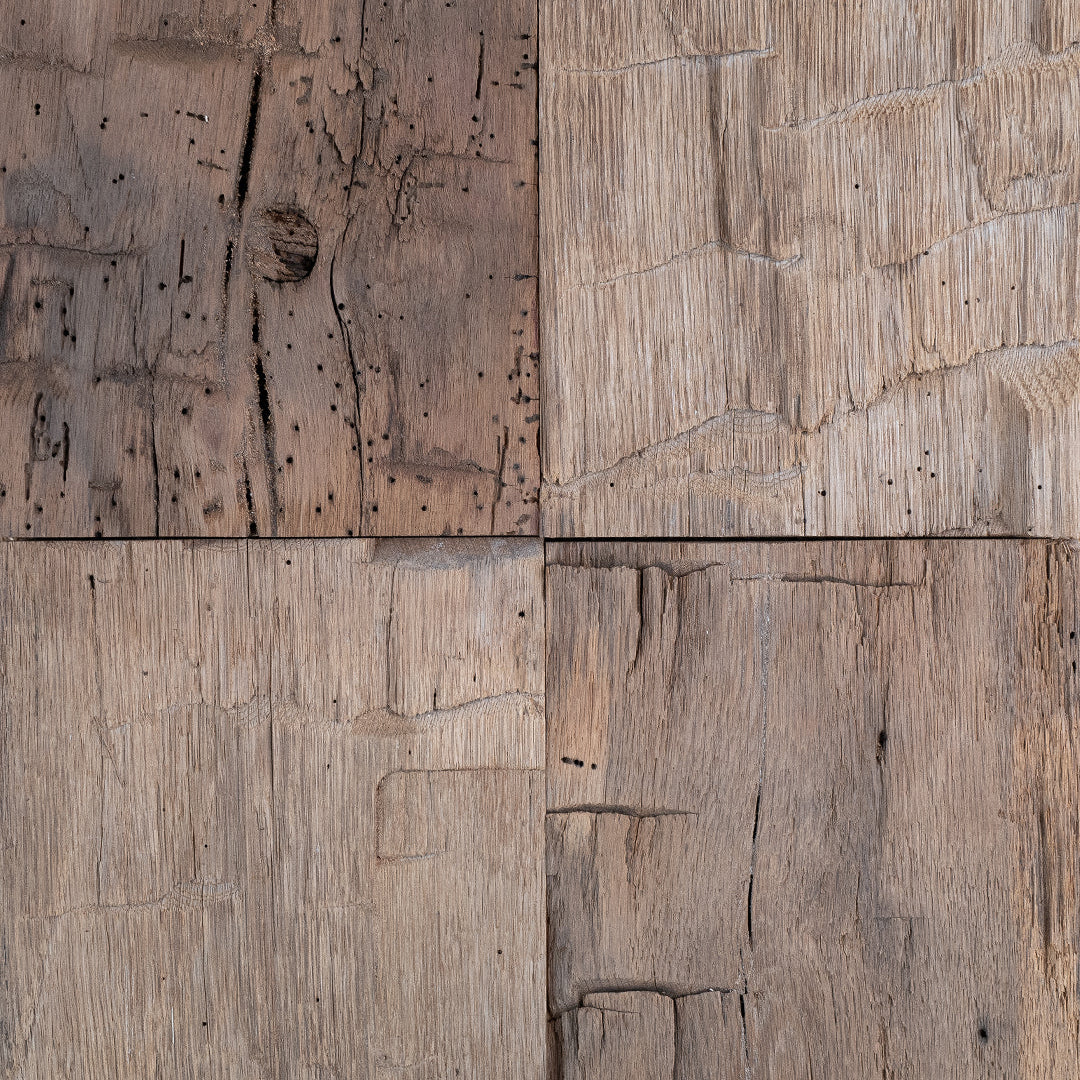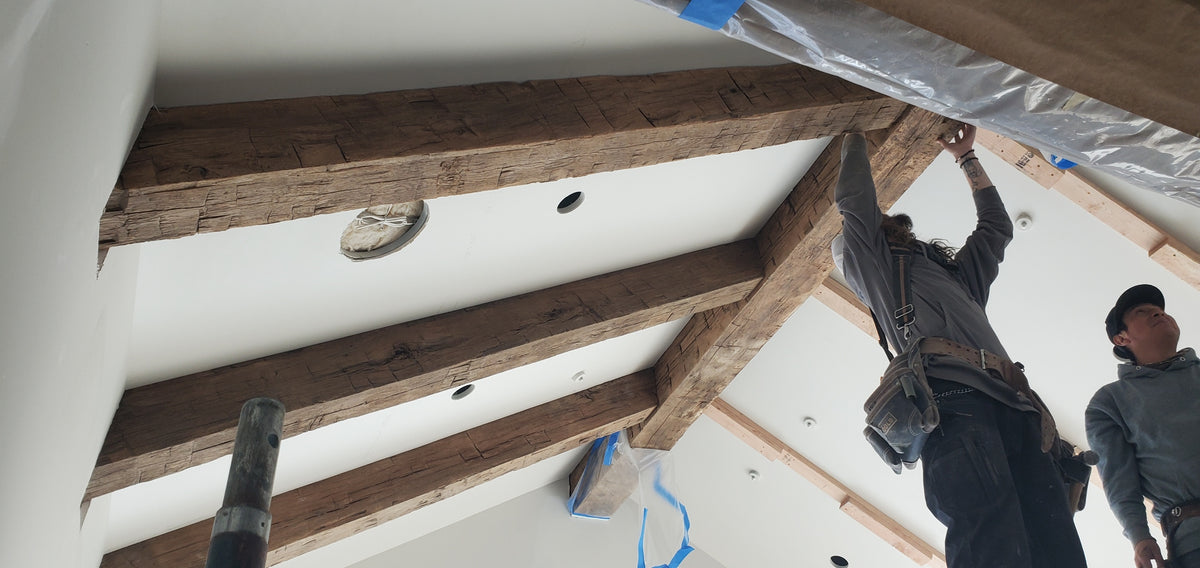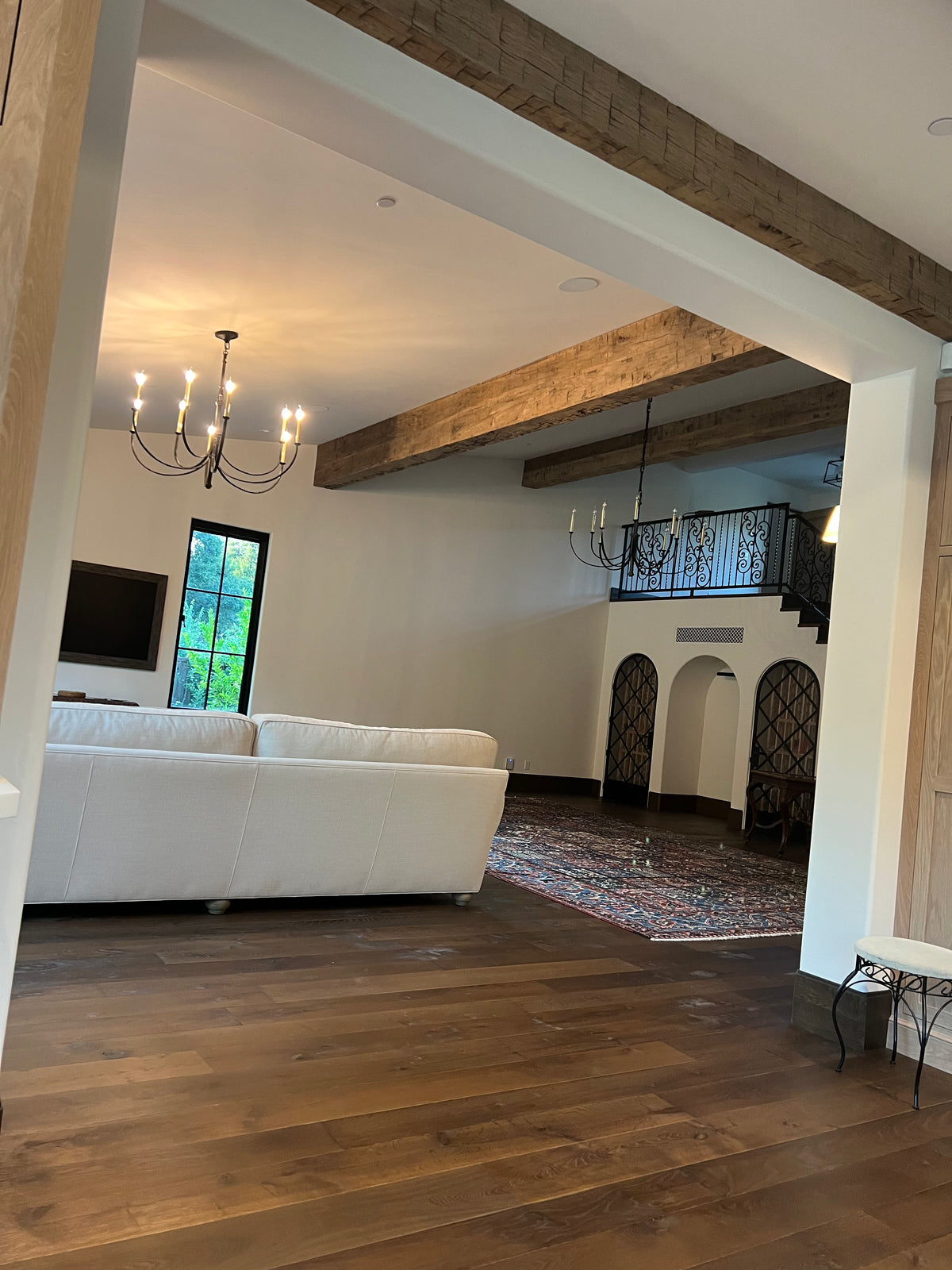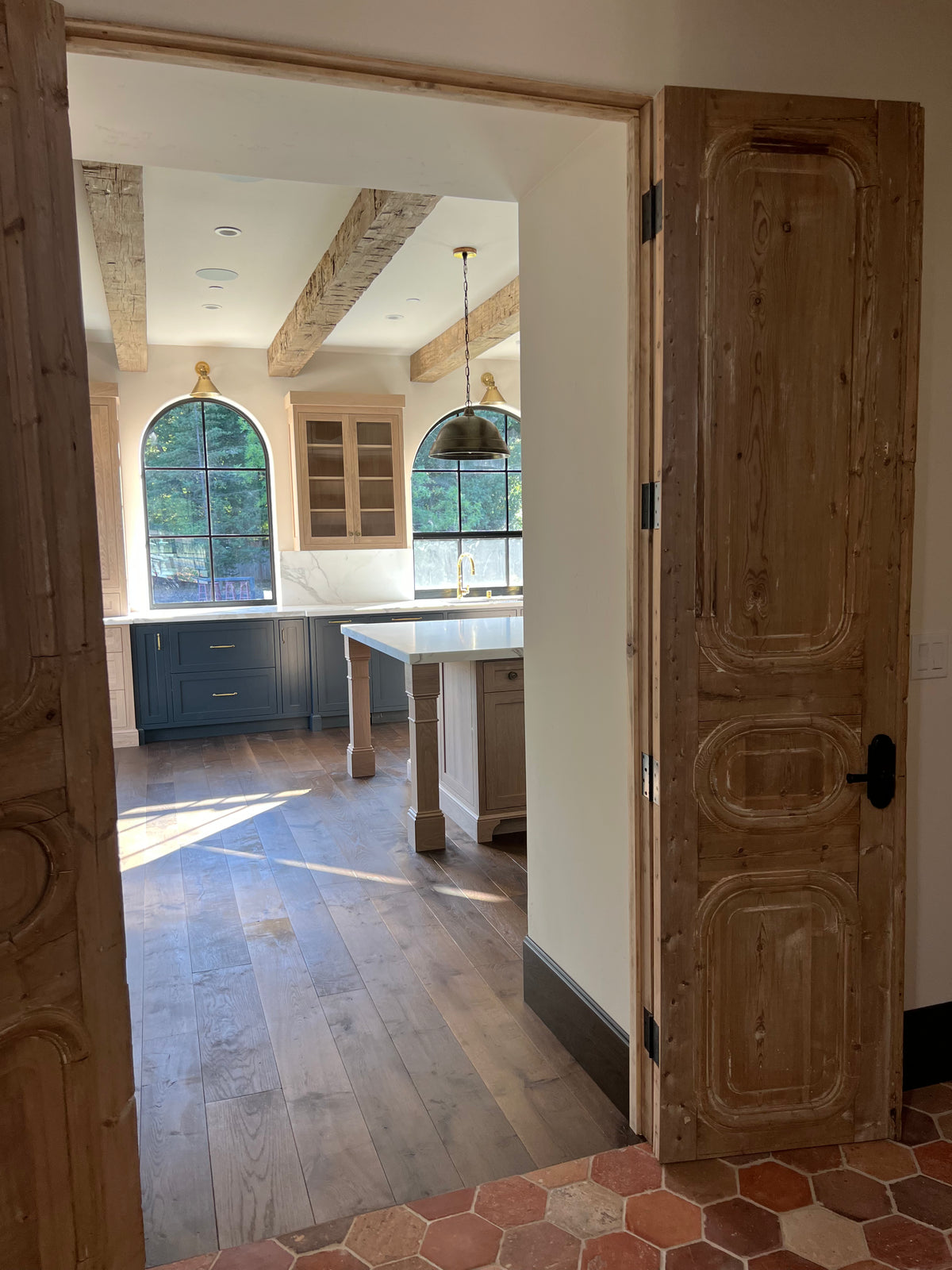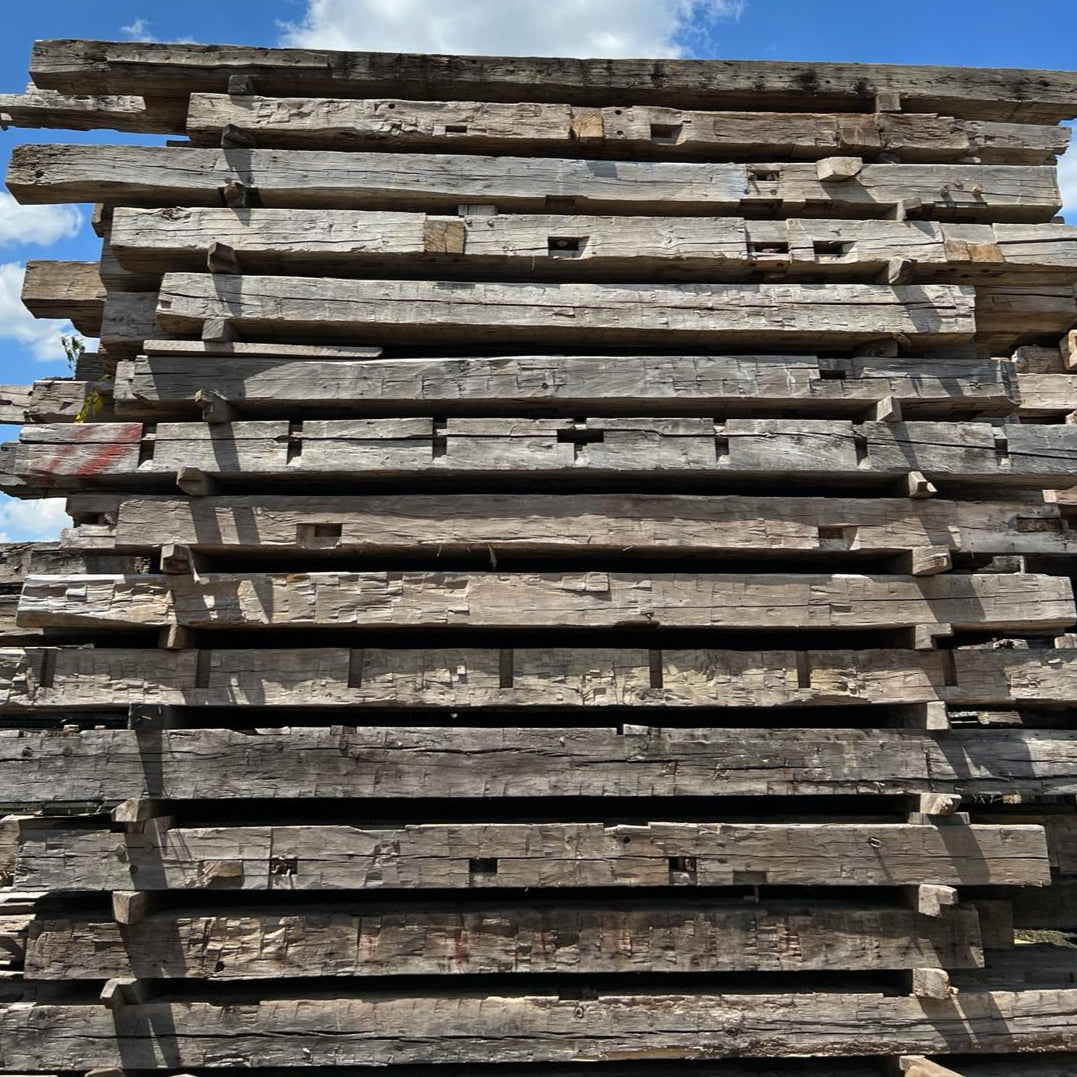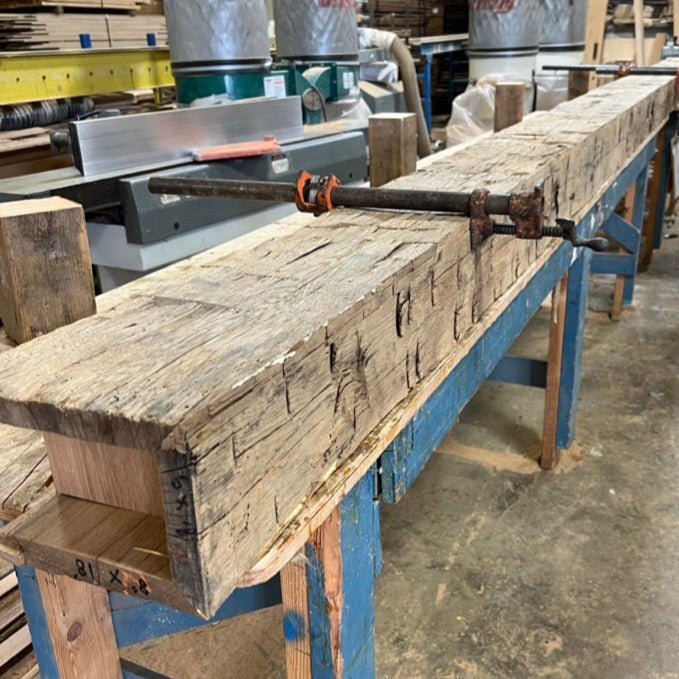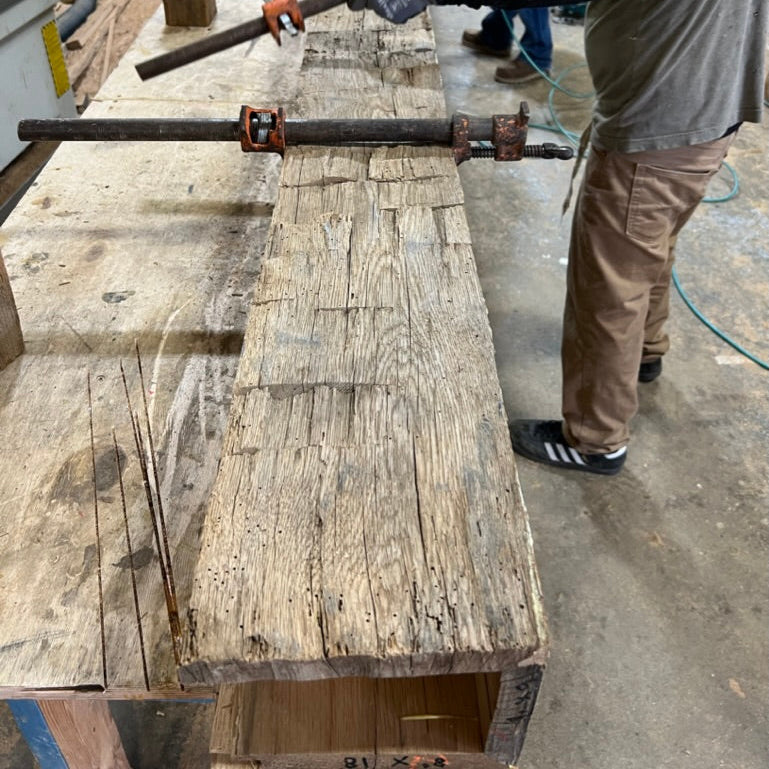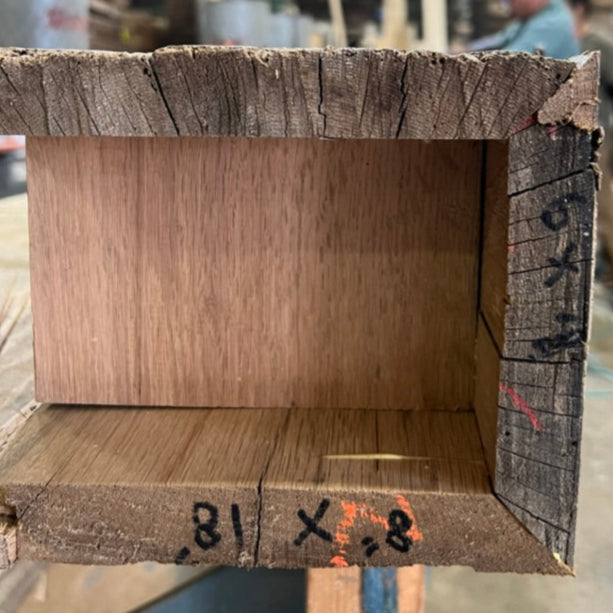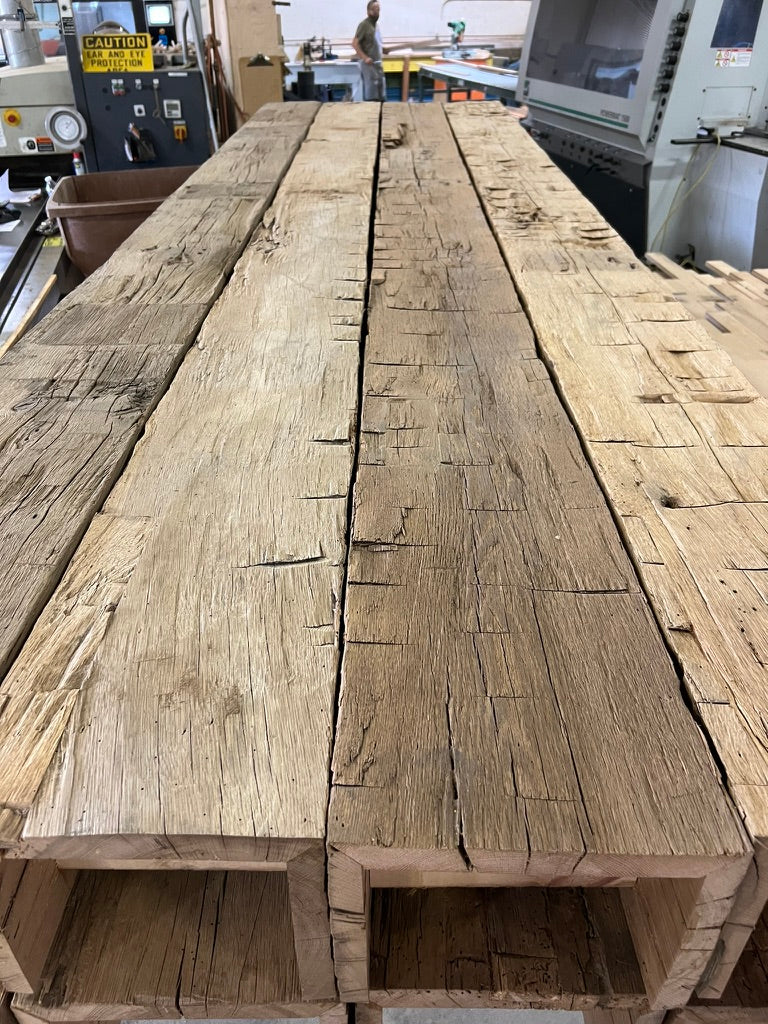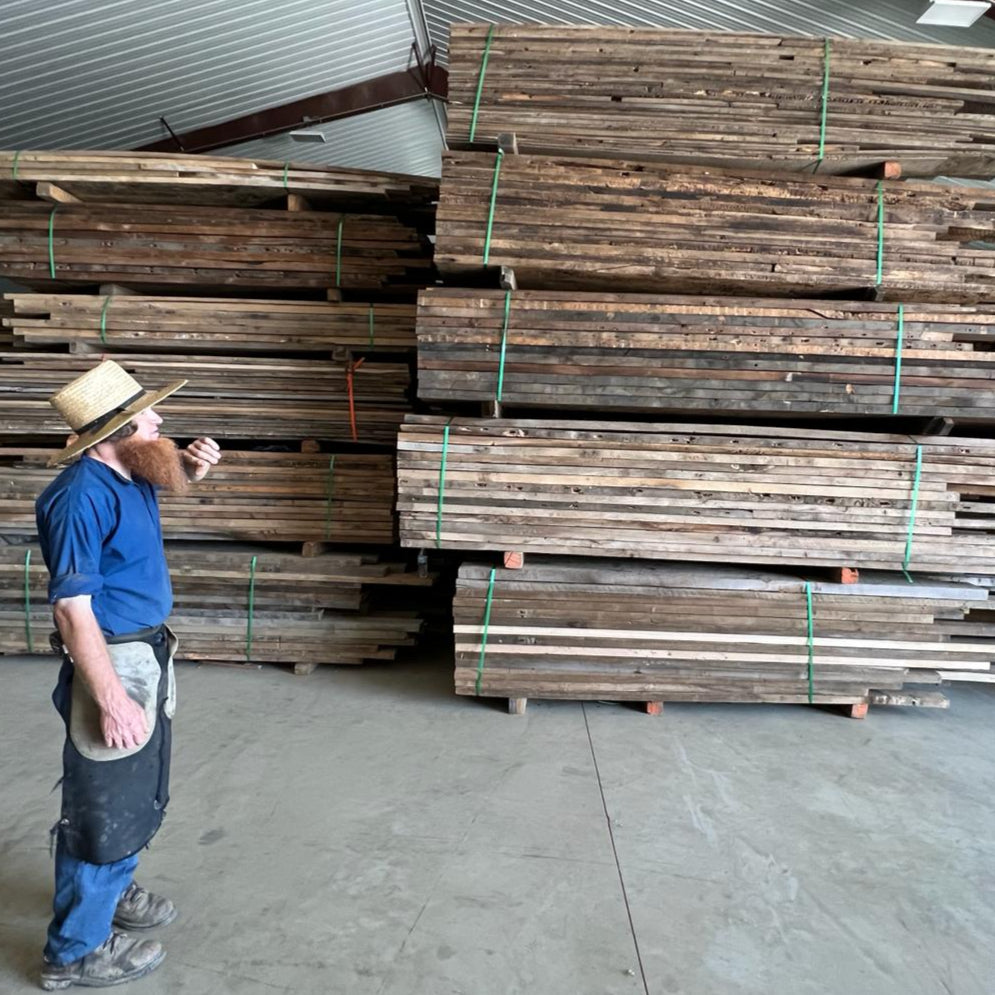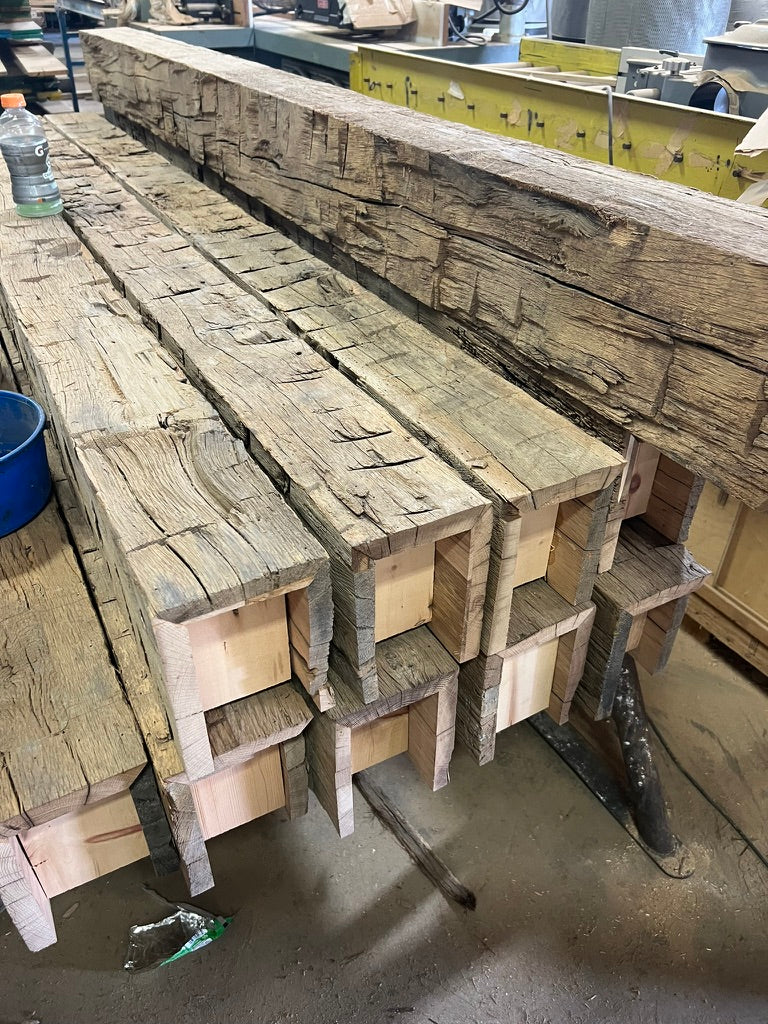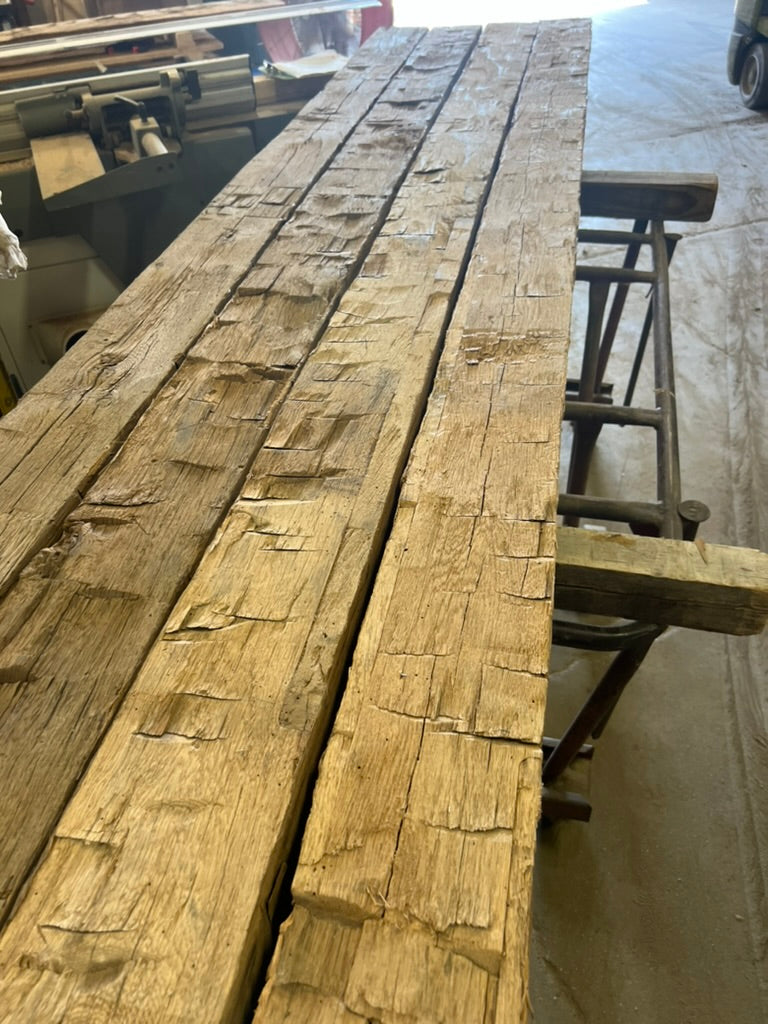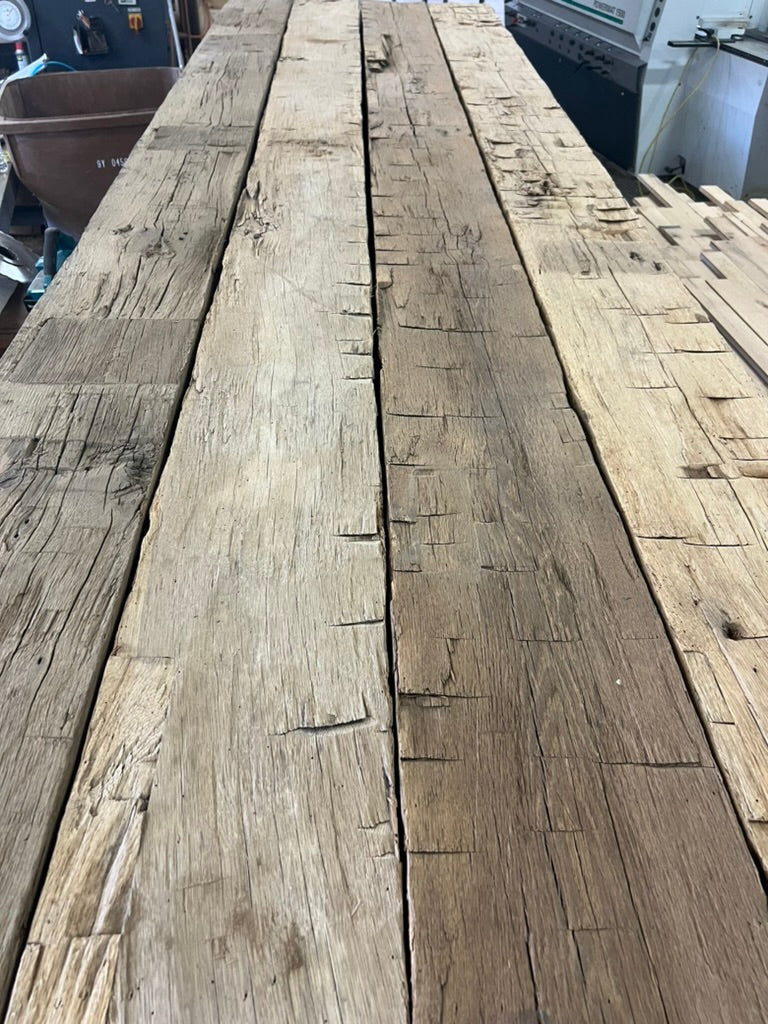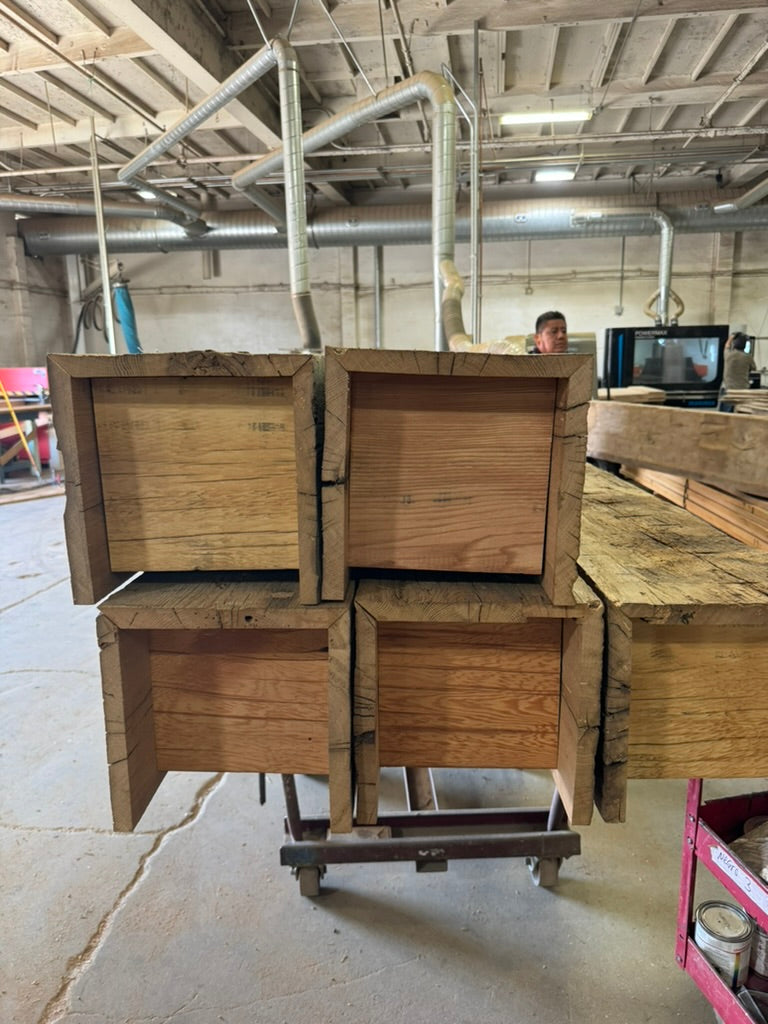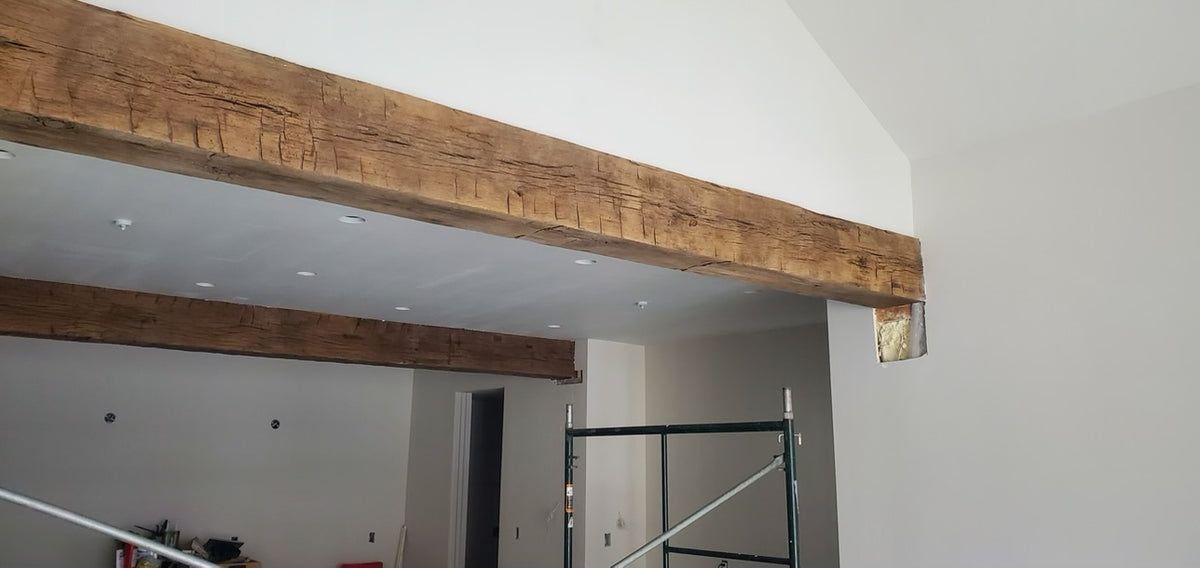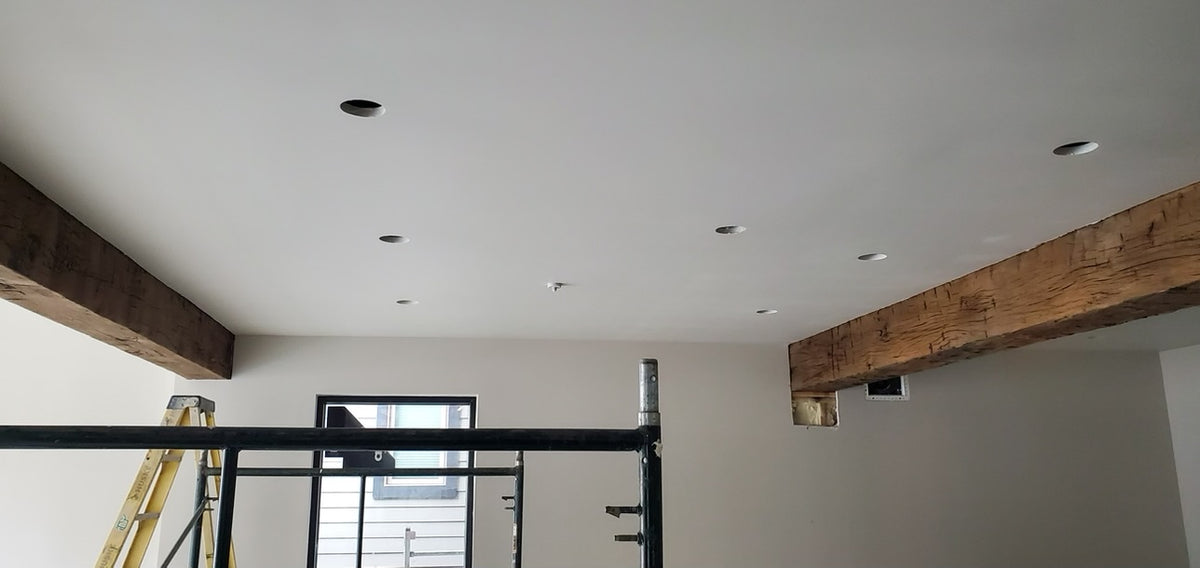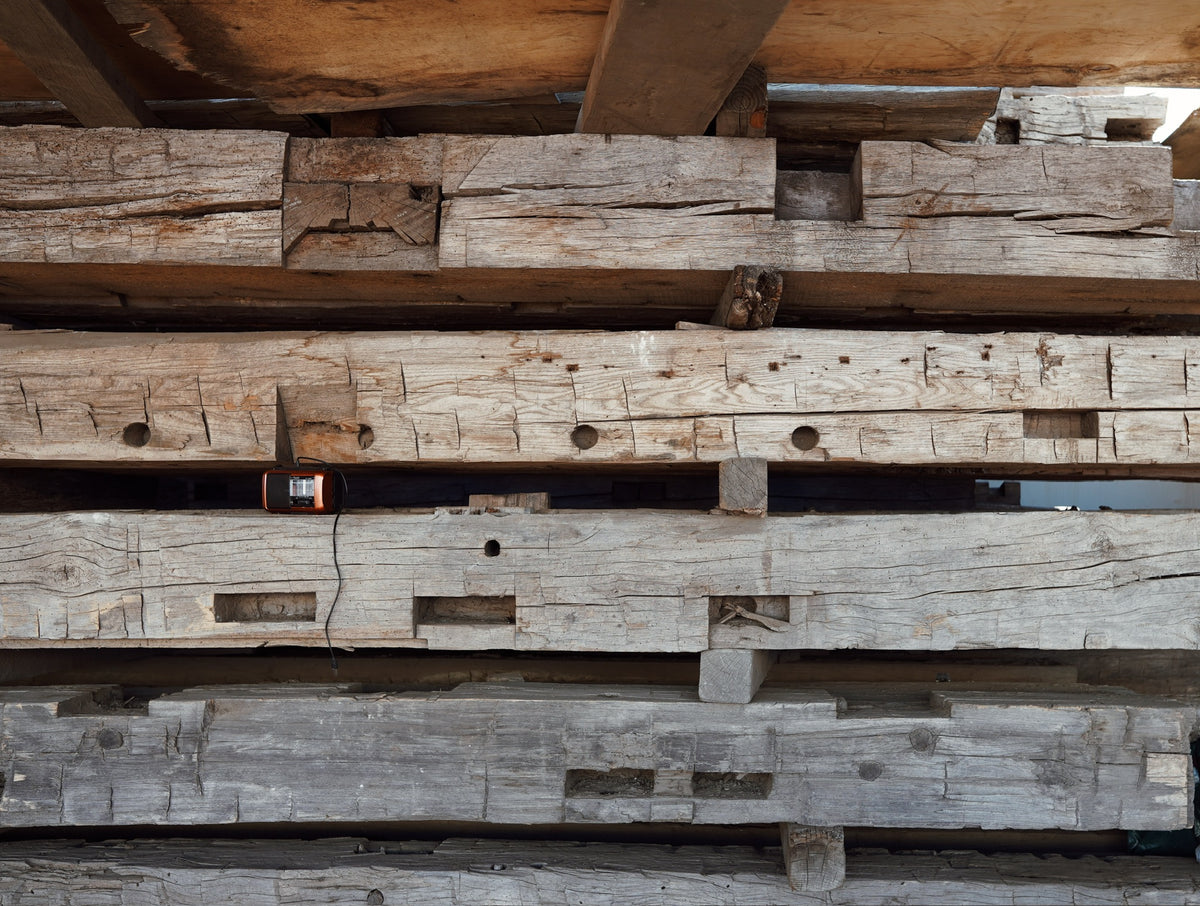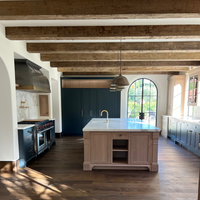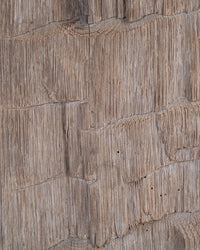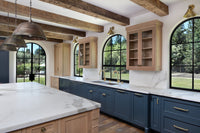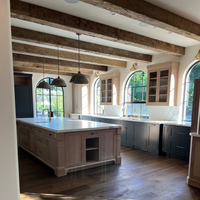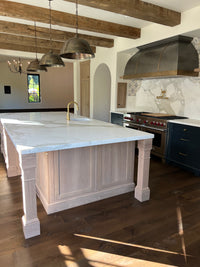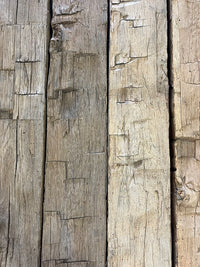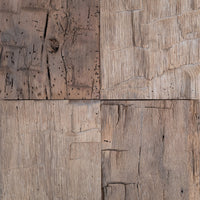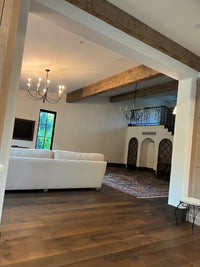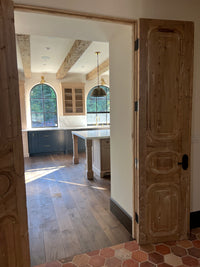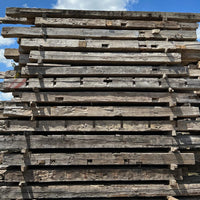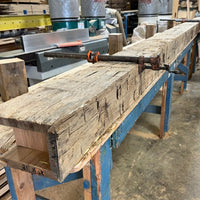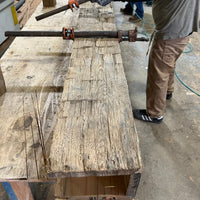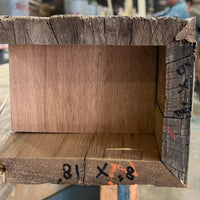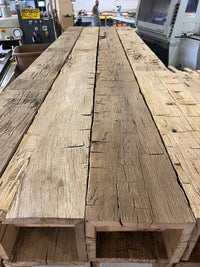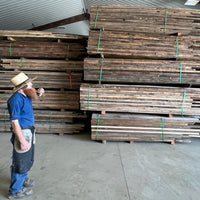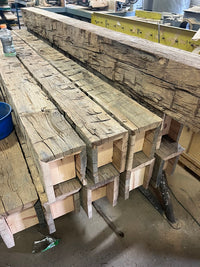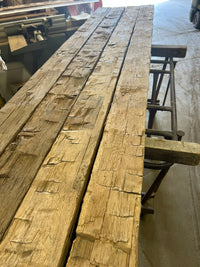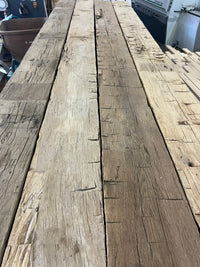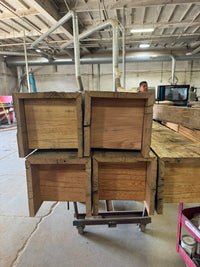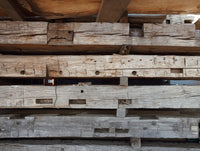Hand Hewn, Reclaimed Oak Box Beams
Crafted over 150 years ago by early American settlers—often Amish or Mennonite craftsmen—these hand-hewn beams are salvaged from 19th-century barns and agricultural buildings across the rural Midwest and Northeast United States. Each beam was shaped slowly and intentionally, using traditional broad axes and adzes, leaving behind tool marks that are now sought-after for their authenticity and sculptural quality.
These aren’t mere construction materials—they’re architectural artifacts. The oak itself is old-growth, harvested from forests long gone, dense with character and impossible to replicate today. Their rich patina, knotting, and surface checking offer a tactile narrative that machine-made products simply can’t deliver.
Whether suspended overhead in a modern farmhouse, used as fireplace mantels in a minimalist interior, or integrated into a luxury retail space, these beams serve as bold, grounding elements. Their raw, storied finish contrasts beautifully with refined materials like stone, plaster, and steel—ideal for designers seeking tension between old and new.
Key Features:
- Authentic hand-hewn American oak beams with historical significance
- Distinctive textures and irregularities from traditional craftsmanship
- Ideal for adding rustic charm to both traditional and contemporary interiors
- Sustainably sourced and eco-friendly
Specifications:
| Species: | Oak |
| Face and Sides (Solid): | Standard Sizes, 6″ x 6″, 8″ x 8″, 10″ x 10″, 12″ x 12″, Custom |
| Face and Sides (Box): | Any Size Available |
| Standard Lengths (Solid): | 4′ to 50′ |
| Standard Lengths (Box): | Any Size Available |
| Box Thickness: | 1″ |
| Box Joints: | Miter |
| Surface: | Hand Hewn |
| Finish: | Unfinished |
